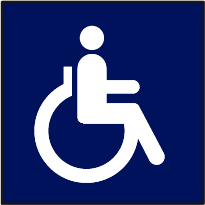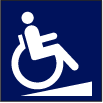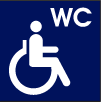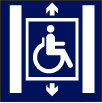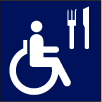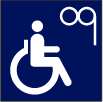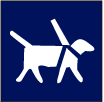

|
APPENDIX A
|
|||||||||||||||||||||||
| SYMBOLS OF ACCESSIBILITY | |||||||||||||||||||||||
| International Symbol of Accessibility Used in Buildings and Transport | |||||||||||||||||||||||
|
|
|||||||||||||||||||||||
|
:: This symbol was adopted for the first time at the XI International Conference in Dublin in 1969. :: The meaning of this symbol is that the access to a certain area/building or transport is adapted for wheelchair users. :: The minimal dimension of the symbol should be 0.15m x 0.15m and the maximum 0.30m x 0.30m. :: The background colour should be blue and the lines should be white.
|
|||||||||||||||||||||||
| International Symbol of Communication Accessibility | |||||||||||||||||||||||
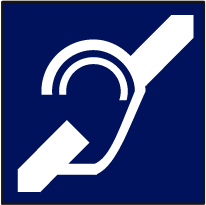 |
|||||||||||||||||||||||
|
:: It should be placed where access to information and communication is guaranteed.
|
|||||||||||||||||||||||
| Adaptation of the Accessibility Symbol | |||||||||||||||||||||||
|
The accessibility symbol has been adapted to suit specific purposes, for example:
|
|||||||||||||||||||||||
|
|||||||||||||||||||||||
